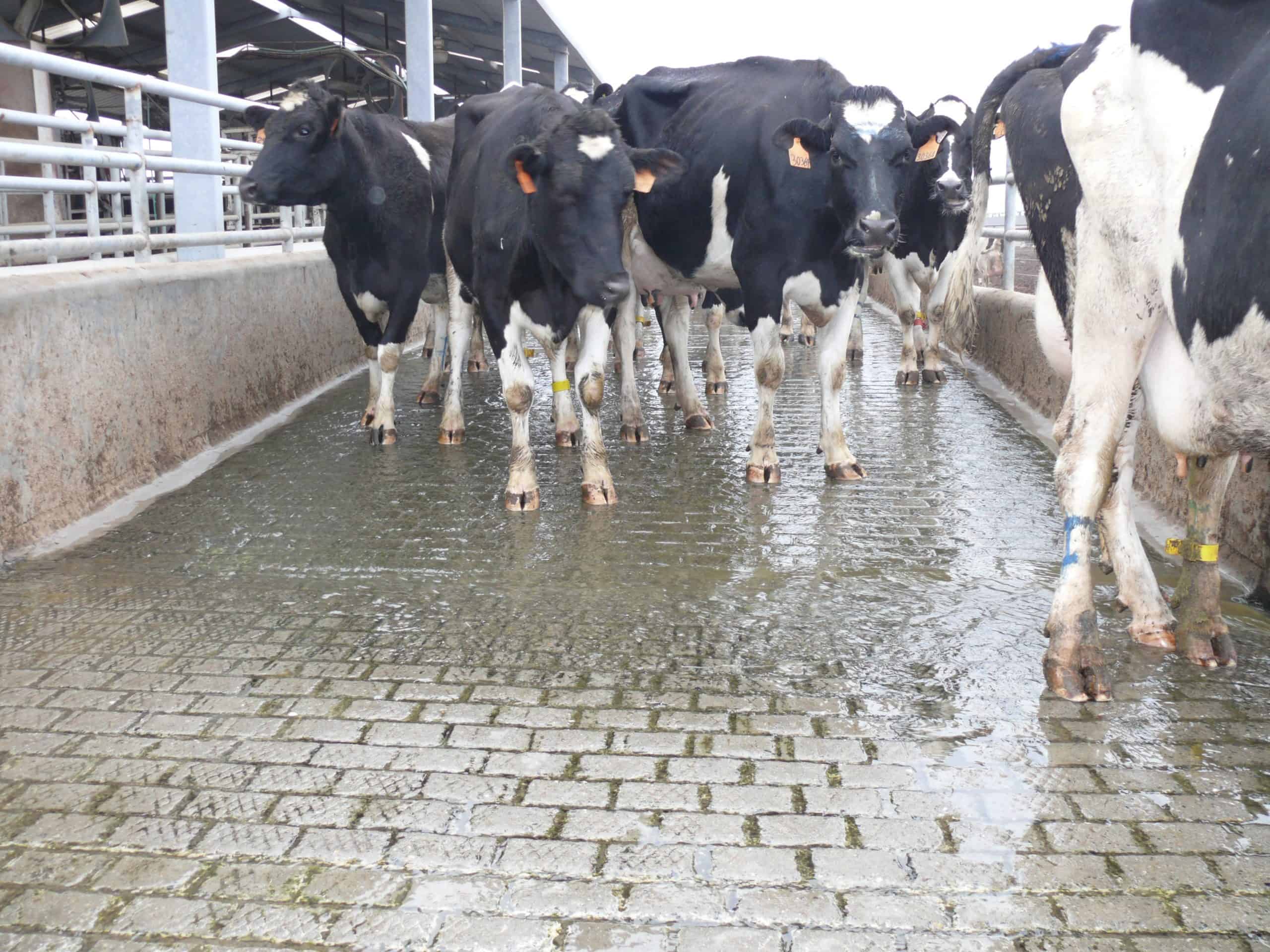
With a hoof care career that has spanned over 40 years, you could say I have seen a thing or two when it comes to the success of hoof health products.
This is especially true in the last 20 years as foot hygiene has become a critical success factor for many dairy operations. Within the footbath, copper sulfate has been a popular commodity product that has set the standard by which other products are measured. It continues to be the workhorse and success of many footbath programs and is now available in a variety of products.
Commercially available copper sulfate is typically sold in 50-pound bags as copper sulfate pentahydrate, which consists of approximately 25.5% copper and 38.5% sulfate. As a widely available commodity, prices tend to be consistent across multiple retailers. Its antimicrobial properties have been known for centuries. With respect to hoof hygiene, copper sulfate excels at dealing with hoof rot and is useful in the prevention of digital dermatitis when used at higher concentrations. It is also capable of improving hoof hardness, which is critical in modern dairies.
When used in a footbath, copper sulfate powder must be mixed with water; otherwise, it can remain as large undissolved clumps at the bottom of the footbath, where it won’t help hooves. The need to mix can preclude its use in an automated footbath system. Copper sulfate is also prone to rapid deactivation when copper ions combine with ions from manure, urine, and other organics in the water. Lastly, the price of copper sulfate is currently at an all-time high due to the rebounding economy and other economic forces.
Branded hoof care products that contain copper sulfate in liquid form have been developed to address some of the issues inherent to copper sulfate powder. For instance, they can be used in automated footbath dosing systems, they easily mix in water, and they can be formulated with additives to make copper sulfate more efficient. However, it can be difficult to assess the effectiveness unless the buyer knows the percentage of copper sulfate in the product and the usage rate in the footbath. Ultimately, copper sulfate concentration in the footbath is the best predictor of results. The more copper sulfate you have in the footbath, the greater its success due to the antimicrobial capability and the better job it can do coating the tubulars of the hoof horn to reduce moisture and improve hoof hardness.
The concentration of copper sulfate is also the greatest driver of the product cost. Concentrations of 5% to as high as 20% by weight can be found on the market. A product with 5% copper should usually cost less than a product with more copper. Knowing the density of the product, you can determine the pounds of copper per gallon of product. For instance, if the density of the product is 10 pounds per gallon and the label says it contains 20% copper sulfate, then you will have 2 pounds of copper sulfate per gallon of product. You can always ask the manufacturer for the product density and percent copper sulfate if not listed on the label.
The next factor in determining copper concentration is the usage rate, which is usually expressed as a percentage of the total volume (percent v/V) or gallon of product per gallon of water (g/G). The concentration of copper sulfate in the footbath is a function of the amount of copper sulfate in the product and the usage rate. For instance, if a product contains 2 pounds of copper sulfate and has a usage rate of 10% v/V (or 5 gallons per 50 gallons), then you would have a total of 10 pounds of copper sulfate in your footbath.
Understanding copper concentration in the footbath can help you to evaluate various products because it directly relates to the product’s potential to be effective. This information can also be helpful when evaluating the relative cost. By determining the cost per pound of copper sulfate in the footbath, you will have a tool for comparison of different product offerings.
The answer depends on several factors, including time of year, hoof hygiene, and the problem you are trying to counter. If you have dirty hooves or a heavy soil load in your bath, you may need to run a bath with 10 to 15 pounds of copper, as soil loading can neutralize the copper ions. If you have very clean hooves and the soil load is manageable, you may be able to have success with 5 to 10 pounds.
To counter dirty hooves and organic loading, some products include a surfactant to aid in the removal of caked-on dirt and manure. Some products also include additives to make copper sulfate last longer. These additives slow the rate at which copper’s ions are neutralized by organic matter like urine and manure, which are released into the bath. Therefore, less copper can work longer before a footbath change is needed. While these additives contribute to the product cost, copper sulfate comprises most of the cost.